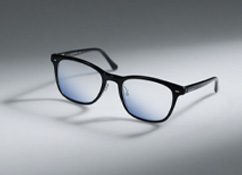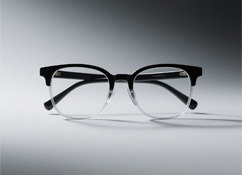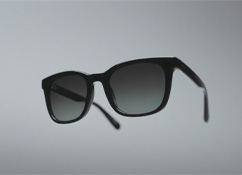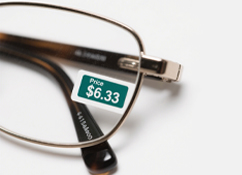Ever wondered how ancient people solved blurry vision before modern glasses? From polished crystal stones to heart rate-tracking smart glasses, the evolution of eyeglasses isn’t just a tech journey—it’s a centuries-long story of style, function, and human ingenuity. Today, we’re uncovering the trend secrets behind these iconic lenses.
In ancient Egypt and Mesopotamia, craftsmen discovered a game-changing secret: clear crystal or quartz, ground into a convex shape, could magnify text. This polished stone became humanity’s first optical tool for vision correction—aptly called the “poor man’s reading glass.” People held it up to parse small print, and owning one turned scholars into trendsetters. Much like today’s limited-edition accessories, a crystal magnifier was a subtle “flex”—a symbol of intellect and exclusivity that marked the era’s first vision trend.

Italy introduced the next big leap: single-lens metal frames. No more holding stones—wearers hung lenses around their necks with string or pinched them onto their noses. Convenient? Yes. Comfortable? Not exactly. Long wear caused nose soreness, and a bump could send them flying—hence the “elegant nuisance” nickname. But medieval scholars lived for them. Hunched over manuscripts, the glint of letters through their single lens became a “scholarly secret signal”—a way to broadcast smarts and taste. Framed eyeglasses weren’t just tools; they were the first fashion-forward vision accessory.
1784 changed everything: Benjamin Franklin invented bifocals. For the first time, people with presbyopia could see far (top lens) and read close (bottom lens)—a total game-changer. Foldable glasses followed, small enough to slip into a waistcoat pocket, making portability trendy.
Eyeglasses also got a fashion upgrade. Thin metal frames and tortoiseshell patterns dominated. Aristocrats used them to craft an “intellectual persona”—polishing lenses till they shone, then reading papers with half their face hidden. This effortless cool cemented eyeglasses as a symbol of elegance, not just utility.
The 20th century was a revolution. The 1940s brought plastic frames: light, affordable, and accessible to everyone. Round frames, cat-eye styles—grandma’s era had retro fashion down pat. The 1960s saw contact lenses hit the scene (“frame-free freedom!”), but early versions were so uncomfortable only the brave dared try them. By the 1980s, “scene-specific” glasses took off: sports lenses, UV protection—something for every lifestyle.
Fashion stole the show, too. 80s Hong Kong stars rocked thick black frames in magazines, turning rebellious cool into a timeless trend. Retro styles weren’t just nostalgic—they were cool.
Today, eyeglasses are a triple threat: function, style, and cutting-edge tech.
Basics like blue light-blocking lenses (for screen lovers), photochromic lenses (light-adjusting convenience), and lightweight titanium frames are standard—glasses now protect eyes better than ever. Style-wise, retro’s back with a vengeance: tortoiseshell, thin silver frames, and small designer picks sell out in minutes. Wear VLIAS glasses, and you’ll get more “where’d you get that?” questions than texts—they’re that iconic.
Smart tech adds futurism: heart rate tracking, vlog recording, and rumors of AR projection. Eyeglasses aren’t just about seeing—they’re about experiencing the world.
From crystal stones to smart glasses, eyeglasses’ evolution is a story of humanity chasing better, brighter lives. They help you see the world and act as your personal style hack: elegance for scholars, rebellion for icons, and uniqueness for you. Every pair is a piece of history—and a reflection of your taste.
Ready to pick your “evolutionary” pair? Head to VLIAS. Let your glasses be your one-of-a-kind style signature—just like they’ve been for centuries.











